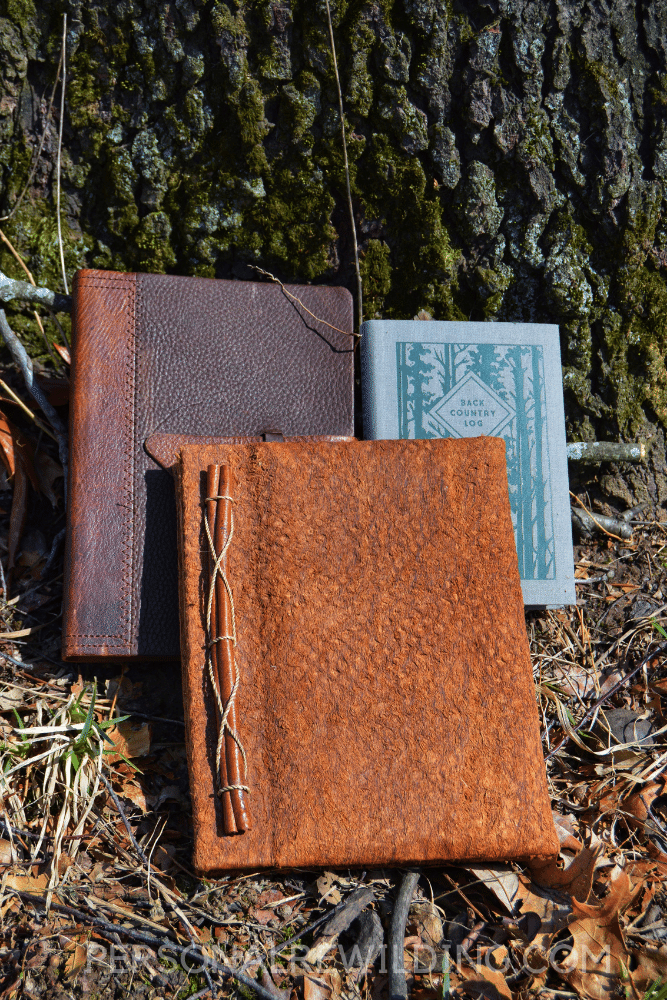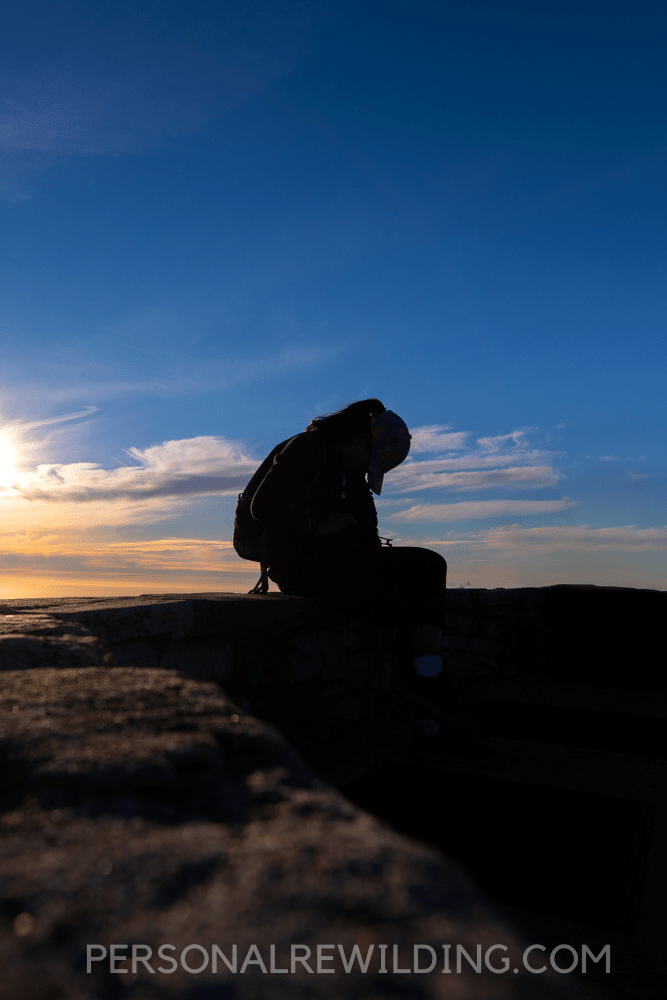- Home
- Connect w/ Nature
- Nature Journaling
Nature Journaling: A Practical Guide
What is nature journaling?
Nature journaling is the act of writing down thoughts or details one notices or feels while being in the presence of the earth and its influence. But a nature journal also includes other ways of capturing observations - sketches, rubbings, collected items.
This can be a formal exercise that involves structure such as alphabetizing, dating, and lengthy entries. Or it can be as simple as jotting down a moment’s thought or musing on a napkin.
There is no right or wrong way. Both are great ways to capture and protect the special moments we encounter.
Nature journaling is an expressive and creative way to connect with nature. It engages both the creative and the detail-oriented part of the mind. You will find that journaling can open your senses and enhance your feeling of connectedness, or place, within the natural environment.
"Keep a notebook. Travel with it, eat with it, sleep with it, slap into it every stray thought that flutters up into your brain. Cheap paper is less perishable than gray matter, and lead pencil markings endure longer than memory."
-Jack London
Why Begin Nature Journaling?
When you’re living in the moment it is hard to believe that the thoughts and emotions you are experiencing are fleeting. You may retain a few momentous occasions, but the details get lost and evaporate like morning dew.
Nature journaling is free, stress relieving, promotes creativity and is a great way to compare and contrast from month-to-month or year-to-year.
It also encourages you to get out into nature! If you’re ever feeling uninspired or lacking energy, open your nature journal and read some of your entries. It’s guaranteed to put your imagination to work and you’ll soon find yourself lacing on your shoes.
Nature journaling is a great way to recall feelings, thoughts, weather, scents, sounds, conversations, travels, and locations. It’s also a great way to document:
- Sunsets and sunrises
- Wildlife sightings
- Blooming patterns
- Plant varieties
- The migration of birds
- The length of your daily walks or bike rides
- Tides
- Storms
- Insect Activity
- Seeds or berries
- Animal tracks
- And much more…
You’ll also find it makes you more alert to your surroundings. It focuses your senses and sharpens your mindfulness of the world. You’ll notice things that you might have missed. The colorful beetle, the texture of bark, the sound of water trickling through a creek bed, the springy feel of moss, the scent of wet leaves.
Connecting with nature is as simple as putting quill to parchment! Ok, maybe you don’t actually have a quill (or parchment) but you have to admit you liked the sound of it. And for good reason. Many of us have an affinity for antiquarian practices! And nothing is as timeless as journaling.
For many centuries journaling, diary entries, and poetry were the norm. There’s something deeply personal about handwriting; it’s the written equivalent of a person’s voice.
Nature journaling is rudimentary, yet very few of us take the time in these busy days to journal our thoughts.
"Write about love,
long evenings,
the dawn,
the trees,
about the endless patience
of the light.
-Adam Zagajewski, "Letter from a Reader" (excerpt)
Who Can Nature Journal?
Anyone, regardless of age or physical ability, can create a nature journal. It requires no special knowledge or training. A nature journal is for you - put down your thoughts, your observations, your doubts. No one will judge you on them.
Nature journaling is the opposite of a social media post. It is deeply personal, private, and not attention-seeking.
Many of the other ideas we’ve explored elsewhere on the site involve the physical use of the body in the outdoors. Nature journaling engages the mind and senses and is safe, easy, and therapeutic for all ages and abilities. It can also be a catalyst for change and growth and other forms of artistic expression.
This can easily be a joint or group activity too. You choose how inclusive or reclusive this activity will be.
Where and When can you Nature Journal?
The details of nature journaling are entirely up to the individual, and there are many ways to add it to your life…but there are more and less effective methods.
You may find yourself using a napkin out of your glove-box (like I mentioned above) to jot down ideas, emotions, or details from a hike or vacation.
Or you may be enjoying a cup of coffee, pencil in hand, at your kitchen table when the hummingbirds are flitting at the feeder and the scent of lilac wafts through a cracked window in late April.
Here are a few tips for making the most out of nature journaling:
1.) Have a dedicated journal or notebook that you use exclusively for nature journaling. This can be a simple spiral bound notebook, a legal pad, or a small leatherbound or clothbound journal. Many retailers offer specific “nature journals”, “hiking journals”, or “outdoor journals”, complete with quotes, writing prompts, or sections for individual details.
2.) Pack your journal and your favorite writing utensil to carry along in a small backpack with your other essentials on your next outdoor excursion. Usually, the very best place to write in your journal is while you are walking in nature, observing and processing the world around you.
3.) Carry your journal with you to other places as well. The time when you find yourself inspired to write in your journal may be while you are in nature or it may be in a quiet moment of reflection and solitude long afterward.
The location isn’t as important as the feelings it evokes but here are some great places to scribble your thoughts and observations:
- While sitting on a fallen log
- At a writing desk
- On a blanket in the grass
- In a dog park
- A train, plane, boat, or automobile
- At the coffee shop
- On the deck or patio
- In a lawn chair
- At a state or national park
- In bed
- Around a campfire
- In a hammock
- During study hall
- On a park bench
- The courtyard at your office
- The beach
Nature journaling can - and often does - include more than simply writing. Do you have an artistic streak? Sketch or draw some detail of your experience - a shy deer grazing in the distance, the veined pattern on a leaf, a sunlit fold of the landscape.
Rubbings can be done on many things - rocks, leaves, flowers, shells, tree bark - to capture the texture and pattern.
Collecting feathers or fallen leaves and pressing them into your journal - along with annotations about the details of your find - is a great way to bring a little bit of nature back with you.
Smashbooks are a really fun and easy way to journal. They are a cross between a scrapbook and a journal but in a very informal way.
A smashbook is just a casual way of smashing together memorabilia, mementos, maps, menus, itineraries, feathers, flowers, journal entries, etc…into a journal or notebook. Smashbooks make great keepsakes and don’t require a lot of money or time commitments like scrapbooks can.
Open. Insert. Doodle. Smash. Shut.
The entries and doodles you write down now can be enjoyed and reflected upon later. You’ll be surprised how vibrant a small keepsake and a short note can preserve a memory.
It’s fun and enlightening to open up your hiking logs, earth diaries, and nature journals. In much the same way as photography, you are securing a moment in time.





